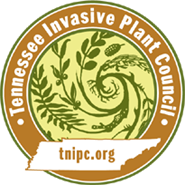Cardiospermum halicacabum L.
Balloonvine, Love-in-a-puff| Category |
|---|
| Vine |
|
Similar Species May be confused with the following native and/or non-native species. Landscape Alternatives lists native horticultural substitutes |
Landscape Alternatives |
|---|

Description
Height
This woody, annual or perennial vine (annual in colder climates) can reach up to 10 feet (3 m) in length.Leaves
Trifoliate, toothed leaves can be as large as 4 inches (10 cm).Flowers
Minute white flowers bloom from the summer through the fall and are not very showy.Fruit
The fruit is a brown, thin-shelled capsule that is inflated and “balloon-like.†It can be up to 1.25 in (3 cm) in diameter and contains three black seeds that have a white, heart-shaped scar.Images
Photo: Michael Jordan, Alabama Department of Environmental Management, Bugwood.orgMore images of Cardiospermum halicacabum
Life History
Cardiospermum halicacabum is part of the Sapindaceae, or soapberry, family.Habitat
There are no records of specific habitats in which this species is thought to occur.Origin & Distribution
Balloon vine is native to a few Caribbean islands including Puerto Rico and the American Virgin Islands. It is now present in most tropical areas including tropical Africa, South America, New Zealand, and Australia. It has been introduced and spread across much of the southeastern and northern United States ranging as far west as Texas, Oklahoma, and Kansas and as far north as Michigan, New York, and Massachusetts. It is listed as a noxious weed or pest plant in AL, AR, SC, TX.Sources
University of Oklahoma Department of Botany and Microbiology. Cal’s Plant of the Week: Cardiospermum halicacabum – Balloon Vinehttp://www.plantoftheweek.org/week256.shtml
USDA PLANTS Database: Cardiospermum halicacabum L:
http://plants.usda.gov/java/profile?symbol=CAHA13
Management Recommendations
There are no records of proper management techniques for this plant.Mechanical Control
Hand Pulling: Removal of above ground biomass can be achieved by hand-pulling or digging out of young plants.Cutting: If the vine grows too high, woody stems can be cut near the ground leaving the top of the vine left to die.
